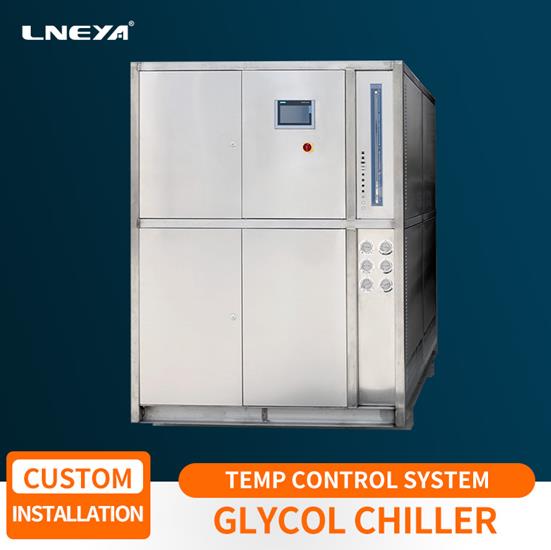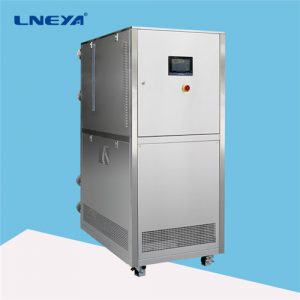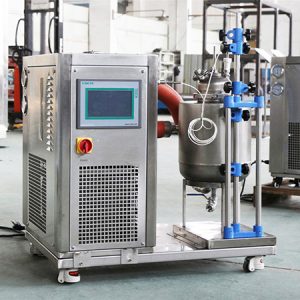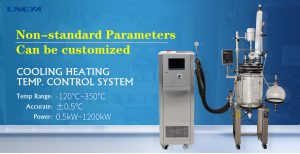The ethylene glycol chiller solution is too cold and too hot
When the ethylene glycol chiller solution
is overheated and overcooled during operation, if you don’t understand these
conditions well, you will not be able to operate the equipment well.

The supercooling phenomenon of the solution
of the glycol chiller refers to the condensed saturated liquid is re-cooled by
a certain device and method, so that the temperature is lower than the
saturation temperature under the condensing pressure. -The occurrence of
subcooling can reduce the flash gas generated by the refrigerant liquid in the
throttling process, reduce the specific volume of the flash gas, increase the
unit refrigeration capacity, and increase the superheat of the return gas,
which protects the compressor Wet stroke operation has certain advantages.
The overheating of the ethylene glycol
chiller solution refers to the difference between the saturation temperature
and the saturation temperature after overheating, which is called the degree of
superheat. The method of measuring the degree of superheat is to measure the
evaporation pressure as close as possible to the temperature sensor bulb,
convert the reading to temperature, and then subtract the temperature from the
actual temperature measured at the temperature sensor bulb. The degree of overheating
should be between 5-8°C. A high degree of superheat will cause the compressor discharge
temperature (discharge superheat) to increase, and the compressor’s operating
conditions will deteriorate and its service life will be reduced. Therefore,
the degree of inhalation superheat should be controlled within a certain range.
Due to the length and thermal insulation of
the solution return pipe (suction pipe) of the glycol chiller, the steam in the
pipe is transferred to the outside and heated. This phenomenon is called
“inhalation overheating” or “pipe overheating”. This kind
of overheating will increase the suction temperature of the compressor and
increase the specific volume of the suction steam, resulting in a decrease in
the refrigeration capacity per unit volume and a decrease in the refrigeration
capacity of the compressor. This is detrimental to the refrigeration cycle.
This problem is called “Harmful overheating.” Therefore, shorten the
length of the suction pipe as much as possible to reduce this harmful
overheating.
In some fluorine refrigeration systems that
use expansion valves, the degree of superheat is used to adjust the degree of
opening of the thermal expansion valve. This phenomenon is called
“beneficial overheating.” Similarly, the superheat generated by the
fluorine steam after reheating is also a beneficial superheat.
If the ethylene glycol chiller solution is
too cold or too hot, there are certain beneficial or harmful places. Please pay
attention to understand when you use it.
관련 권장 사항
-
원자로 온도 사이클 제어기 선택 시 주의해야 할 사항
1031반응 주전자의 온도 순환 제어 기계는 항상 제약 및 화학 기업에 없어서는 안될 장비였습니다. 냉동 및 가열 실험 장비로서 구입 한 원자로 온도가 ...
세부 정보 보기 -
Miniature high-pressure reaction kettle refrigeration heating temperature control system
1038The miniature high-pressure reaction kettle refrigeration heating temperature control system is designed with a gas feed unit, a liquid feed unit, a reaction unit and a collection unit. The raw material gas and raw material liquid are mixed and pr...
세부 정보 보기 -
응축 처리를 위한 유기 폐가스를 선택하는 방법은 무엇인가요?
1306유기 폐기물 가스 장비의 응축 처리는 현재 환경 보호 요구 사항의 환경에서 사용되며, 응축 처리를 위해 유기 폐기물 가스 장비를 선택하는 방법, 효율적이고 효율적인 장비를 선택하는 방법 ...
세부 정보 보기 -
경사 난방 및 냉방 온도 조절기의 유지 보수 단계
1034경사면 온도 상승 및 하강 냉각 난방 온도 조절기는 먼지, 쓰레기 등을 청소하는 중심입니다. 청소 및 변경 검사를 위해 검사를 통해 문제를 발견하고 경사 온도 상승 및 하강의 잠재적 결함을 찾을 수 있습니다 ...
세부 정보 보기
 LNEYA 산업용 냉각기 제조업체 공급 업체
LNEYA 산업용 냉각기 제조업체 공급 업체














